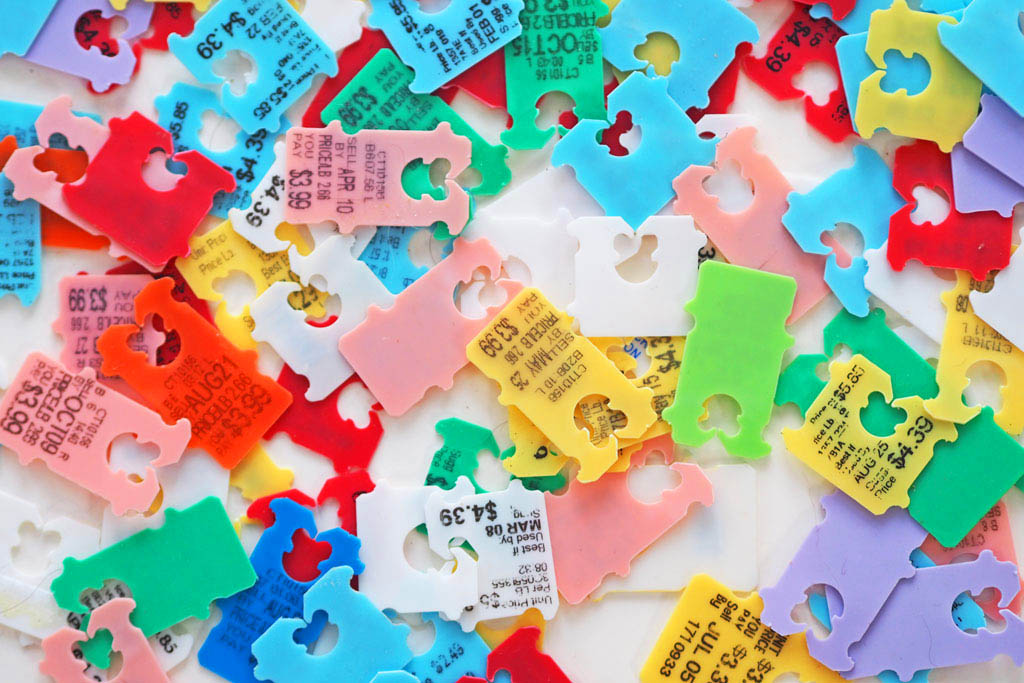New Year’s Day is one of the most traditional events in Japan since ancient times. Kadomatsu, shimekazari, and kagamimochi (mirror-shaped rice cakes) are usually displayed at the entrance as New Year’s decorations before the New Year, a custom that is still carried on today.
However, few people know the original meaning and origin of these New Year decorations. Here we introduce the origin of New Year’s decorations, the period from when to when to display them, and how to dispose of them.
Origin and Meaning of New Year’s Decorations
New Year’s events have been held to welcome and worship the god of the year, the “New Year’s Deity. As an agricultural people, the Japanese have long valued the New Year’s Deity as the “god of a bountiful harvest.
The New Year God is also said to bring life force and happiness itself, so when the New Year approached, people decorated their entrances with kadomatsu (gate pine trees) and shimekidari (decorations for the New Year), preparing to worship the God.
Types of New Year’s Decorations
New Year’s Decorations (1) – Kadomatsu
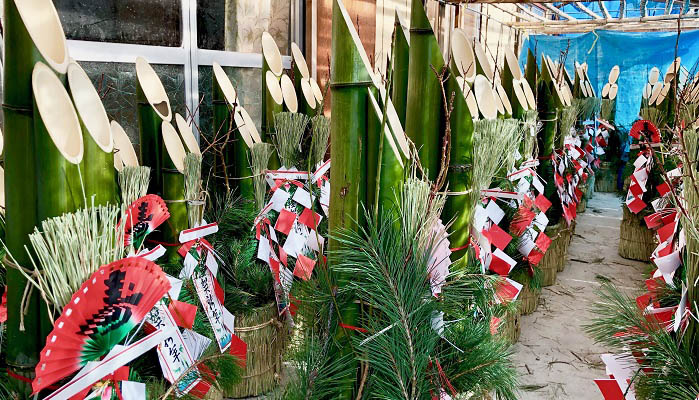
The pine, bamboo, and plum trees used to decorate the kadomatsu are called “Sanyu (three friends of severe cold),” and have been popular as “lucky charms” for New Year’s because of their strength, as their leaves do not wither even in the cold winter months.
Kadomatsu New Year flowers – Pine
Pine trees are evergreen with blue leaves all year round and are said to symbolize “eternal life. Some pine trees are several thousand years old, and are considered to be auspicious because of their “longevity” connotations. The tree is also connected to “to enshrine,” and has been used for auspicious occasions since ancient times because of its congratulatory value.
Kadomatsu New Year flowers – Bamboo
Bamboo stays green even in cold winters without losing its leaves. Its ability to grow straight and unbending even in typhoons and other strong winds makes it a symbol of “sincerity of heart” and “strong aspirations. The speed at which it grows also gives the bamboo a strong connotation as a symbol of vitality.
Kadomatsu New Year flowers – Plum
Plum blossoms, which bloom in the New Year, are considered a symbol of “success” and “good fortune” because they bloom before other flowers such as cherry blossoms. They are also considered to be very auspicious because they overcome the lingering winter cold and bloom with purity and fragrance.
It is decorated as a flower suitable for the beginning of the year, and both red and white plum blossoms are usually displayed on kadomatsu.
Other New Year flowers – orchids, chrysanthemums
In addition to pine, bamboo, and plum blossoms, chrysanthemums and orchids are sometimes used for New Year’s flowers. Although the word “chrysanthemum” may seem to conjure up images of “ring chrysanthemums” and “small chrysanthemums” that are used for offerings, they are actually very auspicious flowers.
In ancient China, the four species of orchid, bamboo, chrysanthemum, and plum were called “Shikunshi,” meaning “four sovereigns” in Chinese, and were regarded as the sovereigns among plants and trees.
・Orchid: A gentle fragrance that evokes nobility and elegance.
・Bamboo: Strong, unbending, and straight temperament.
・Ume plum: The dignified nature that blooms first and cleanest of all flowers.
・Chrysanthemum: The beauty of blooming brightly in the cold of late autumn.
If you avoid the ringed chrysanthemums and small chrysanthemums that are considered for offerings, both orchids and chrysanthemums are splendid festive flowers, so please refer to them when you want to make arrangements for New Year’s decorations.
New Year’s Decorations (2) – Shime-decorations
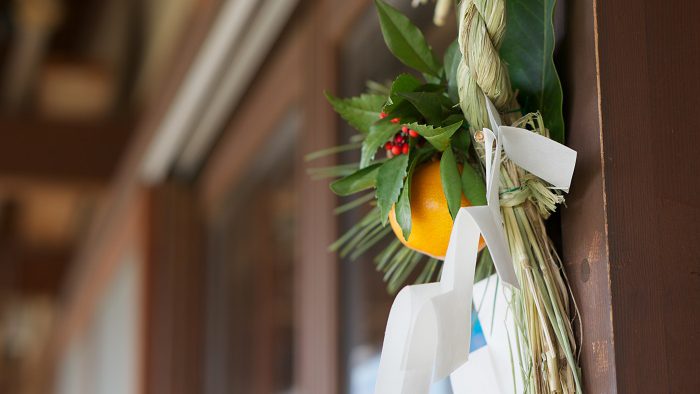
The purpose of decorating an entrance with a shimenawa is the same as that of a shrine with a shimenawa, to keep impure things out of the sacred place where the gods are enshrined.
Many people may not understand the difference between “shime-mochi” and “shimenawa,” but “shime-mochi” are displayed at the place where God resides, on the family home altar. A shimenawa is a rope decorated with lucky charms and displayed at the entrance of a home.
The materials used for shime-dori include “urajiro” for purity of mind, “dai dai” for prosperity of the family, “gohei” (paper in which the power of the gods resides), and “yuzuriha” for longevity of the family lineage.
White on the back (Urajiro)
Urabaku represents “marital bliss” from the two leaves spreading out on both sides, and furthermore, “purity of heart” from the white underside of the leaves.
Orange (Daidai)
Once an orange is on a tree, it remains on the tree for many years without falling off, so there are often several generations of oranges on a single tree. Because of this, the orange signifies “prosperity of the family from generation to generation.
Yuzuriha(Yuzuriha)
Yuzuriha is characterized by the way the old leaves turn yellow and fall off after the new leaves have grown. Since it is associated with the meaning of “handing over” to the next generation, it is associated with the wish for a “change of era to a new generation.
New Year’s Decorations (3) – Mirror-shaped mochi
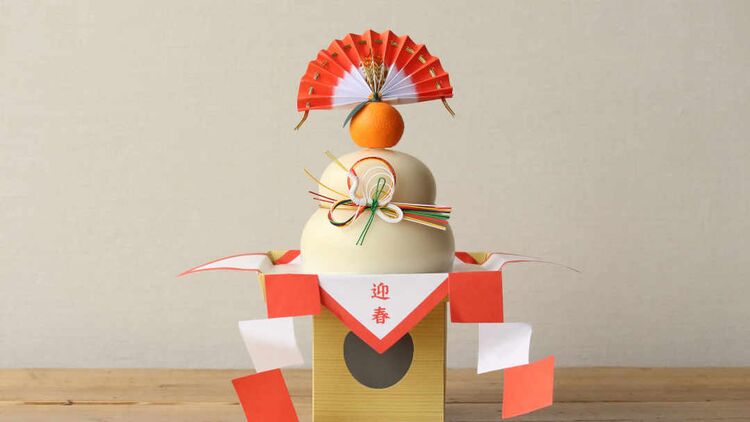
Kagamimochi is a stronghold of the gods. The two round rice cakes, one large and one small, have meanings such as “to build up a new year with fullness” and “to pray for a good harvest of the year and celebrate new beginnings.
The round shape of Kagamimochi also has the meaning of “heart,” and is said to take the form of the sacred round mirror “kamikagami,” which was worshipped at shrines, and to represent the shape of the sun, which is essential to rice farming life. Each of these ornaments has its own meaning.
・Orange (dai dai): Wishes for prosperity of descendants (dai dai) for generations to come.
・Gohei (red staff): The red staff is to ward off evil. Wishes for prosperity.
・Shihobeni: To ward off misfortune and wish for prosperity.
・Urajiro: Wishes for long life.
Kagamimochi are displayed in the tokonoma (alcove) or high place in the living room from the end of the year, and taken down on the day of Kagamibiraki (opening of the mirror). It is forbidden to “cut” the mochi with a knife, as it is associated with seppuku (ritual suicide). However, the word “crack” was also thought to be a bad omen, so the word “open” was used, meaning the end of the world, and the ceremony was called Kagamibiraki.
When do you decorate New Year’s decorations?
So, when is it common to display New Year’s decorations and for how long? Let us explain in detail.
When do you start decorating?
Although it varies from region to region, the official period seems to be around December 13, when preparations for the New Year begin and New Year’s decorations are displayed at the same time. However, in recent years, since Christmas is celebrated on December 25, many New Year’s decorations are displayed on or after December 26.
Incidentally, December 13 is said to be the day of “welcoming the pine tree” or “beginning of the New Year’s festivities,” when people would sweep away soot and gather firewood for making ozoni (a traditional Japanese stew) in order to welcome the New Year’s gods.
The 28th is also considered an auspicious day because of the “eight,” which is the last letter of the Chinese character for “eight” (末広).
Days to avoid
December 29 and December 31 are considered unlucky days to start decorating for the New Year because they are associated with “double trouble.
The 29th is associated with “double trouble,” while the 31st is called “Overnight Decorations,” because it is thought that hasty preparations are insincere to the New Year gods. I accidentally put up the decorations too late! It would be good if you can prepare the decorations as early as possible.
How long to decorate? When to put it away?
Basically, New Year’s decorations are usually put away during the Matsu-no-Uchi period. Matsunouchi” originally referred to the period from New Year’s Day to the 15th “Koshogatsu,” but nowadays, “Taishogatsu,” the period from New Year’s Day to the 7th, is more common.
Although there are differences among regions, in the Kanto region, the “koshogatsu” period is usually from New Year’s Day to the 7th of the seventh day of the seventh month, while in the Kansai region, the “oshogatsu” period is usually from New Year’s Day to the 15th day of the 15th month of the lunar New Year.
How to dispose of New Year’s decorations
How to dispose of them at home
In fact, it can be disposed of as general household trash. In doing so, it is important that each household performs a thorough purification process.
All you need to prepare is a garbage bag, newspaper, and purifying salt. Spread out a large sheet of newspaper or other large paper, place the New Year’s decoration on it, sprinkle salt on it three times to the left, right, and left, then wrap it up and put it in a garbage bag. Do not throw them in the same garbage bag as other general garbage.
“Dondoyaki” at shrines
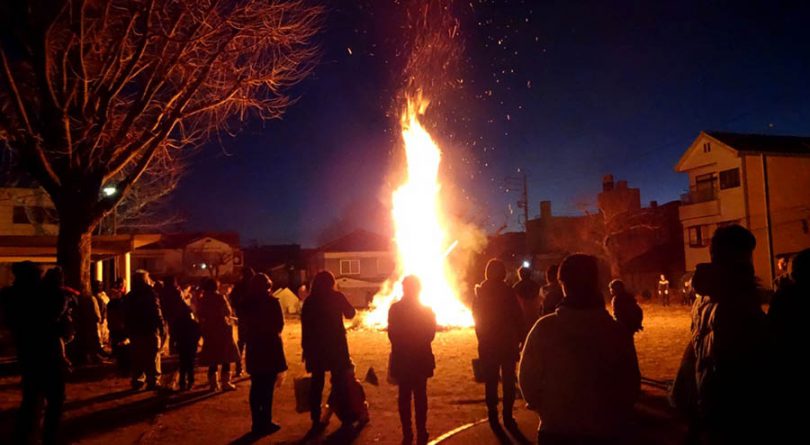
The burning of New Year’s decorations at shrines is called “Dondoyaki” and has been a traditional way of disposing of New Year’s decorations. It is also called “Dondomatsuri” or “Sagicho,” and is sometimes held in vacant lots. In addition to New Year’s decorations, dharma dolls and good luck charms can also be disposed of together.
Dondon-yaki is usually held on January 15, the last day of the pine season, but it is often held on Saturdays and Sundays in the surrounding area, so please check the schedule of Dondon-yaki in your area. It is said that by being exposed to the fire of Dondon-yaki, you will stay healthy for the whole year.



